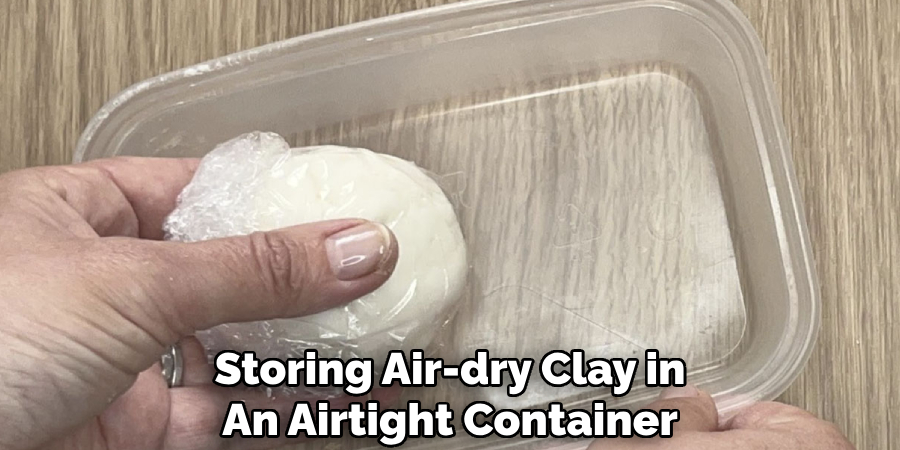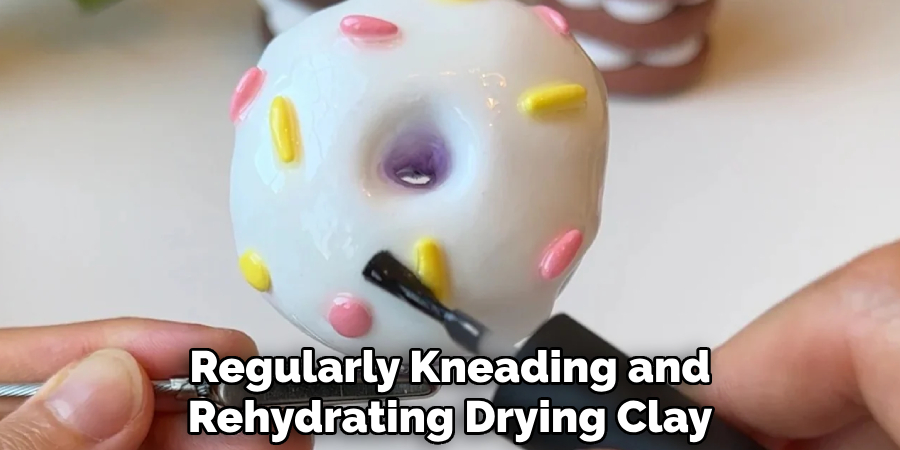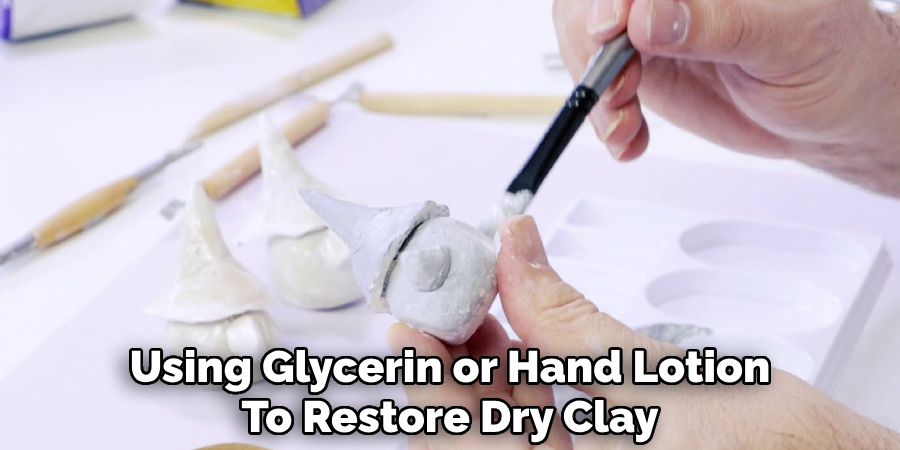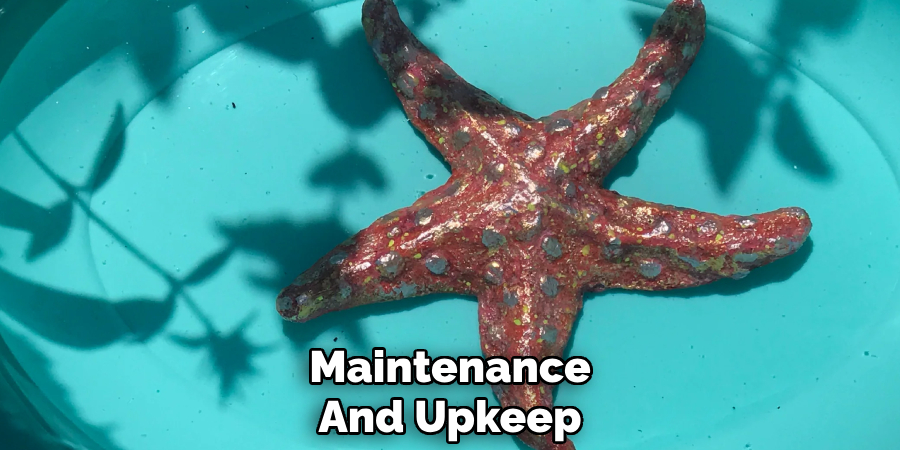Air dry clay is a versatile and convenient material used by artists, hobbyists, and crafters for creating a variety of projects. Unlike traditional clay that requires firing in a kiln, air dry clay hardens by simply being exposed to air over time.

However, to ensure the longevity and quality of your projects, it’s important to properly preserve and store the clay when it’s not in use. This guide will provide essential tips and techniques for how to preserve air dry clay.
Why Proper Preservation Is Important
Proper preservation of air dry clay is crucial to maintaining its usability and preventing waste. When exposed to air for extended periods, the clay can dry out prematurely, becoming brittle and difficult to work with. This not only affects the texture and pliability but can also lead to cracking or breaking during the crafting process.
Additionally, improperly stored clay may collect dust, dirt, or other contaminants, reducing the quality of your creations. By taking the time to store and preserve air dry clay properly, you ensure that the material remains fresh, workable, and ready for your next project, saving both time and money in the long run.
Understanding the Properties of Air-Dry Clay
Air dry clay is unique in its composition and behavior, making it an excellent medium for a wide range of creative projects. This type of clay is typically made from a combination of natural and synthetic materials, giving it a smooth texture and excellent moldability.
One of its most notable properties is that it hardens naturally when exposed to air, eliminating the need for special equipment like kilns or ovens. However, this means that it begins to dry out quickly once it’s removed from its packaging, so working efficiently and keeping unused portions sealed is essential.
Air dry clay is lightweight and suitable for intricate detailing, making it ideal for sculpting, jewelry-making, or decorative art. Once cured, it becomes solid and durable, although it remains more fragile compared to kiln-fired ceramics. Understanding these properties enables artists and crafters to plan their projects effectively, ensuring that the material is used to its full potential while compensating for any limitations.
10 Methods How to Preserve Air Dry Clay
1. Storing Air-Dry Clay in an Airtight Container
One of the most effective ways to prevent air-dry clay from drying out is by keeping it in an airtight container. Exposure to air causes the clay to lose moisture, leading to cracks and hardness. To store it properly, place the clay in a plastic container with a tight-sealing lid.

If possible, use a vacuum-sealed container to remove excess air. Adding a damp sponge or moist paper towel inside the container can help maintain moisture levels. This method ensures that the clay remains soft and ready for sculpting whenever needed.
2. Wrapping Clay in Plastic Wrap Before Storage
For extra protection, wrapping air-dry clay in plastic wrap before placing it in a container can further prevent moisture loss. Stretch a piece of plastic wrap over the clay, ensuring there are no gaps or air pockets. Press the wrap tightly against the clay’s surface and seal it completely.
This double-layer technique creates a barrier that slows down evaporation and keeps the clay pliable for a longer period. For best results, replace the plastic wrap if it starts to dry out or loosen over time.
3. Keeping Air-Dry Clay in a Ziplock Bag with a Damp Sponge
Another simple yet effective method is storing air-dry clay in a resealable plastic bag, such as a Ziplock bag, along with a damp sponge or cloth. The moisture from the sponge helps keep the clay from drying out too quickly.
Make sure the sponge is only slightly damp, as excess water can cause the clay to become too soft or sticky. Squeeze out excess water before placing the sponge inside the bag. Seal the bag completely, pressing out as much air as possible before storing.
4. Regularly Kneading and Rehydrating Drying Clay
If air-dry clay begins to dry out slightly, kneading it with damp hands can help restore its softness. Adding a few drops of water while kneading can rejuvenate the clay and improve its elasticity. If the clay is too dry to knead, wrap it in a damp paper towel and seal it in a plastic bag for several hours to rehydrate.

This method is particularly useful for partially dried clay that is still salvageable. Regular kneading keeps the clay smooth and prevents hardening.
5. Using a Humid Environment to Prevent Premature Drying
Air-dry clay hardens faster in dry or hot environments, so keeping it in a humid space can slow down the drying process. If possible, store clay in a room with moderate humidity or place a small container of water nearby to maintain moisture in the air.
Avoid leaving air-dry clay exposed in direct sunlight, near heaters, or in air-conditioned rooms, as these conditions cause rapid moisture loss. A humid environment helps preserve the clay’s softness and prevents it from becoming brittle.
6. Applying a Thin Layer of Water to the Clay Before Storing
A quick way to maintain moisture in air-dry clay is by lightly brushing or spraying a small amount of water over its surface before wrapping and storing it.
This technique helps create a hydration barrier that prevents premature drying. Be careful not to use too much water, as overly wet clay can become too sticky or lose its shape. A fine mist from a spray bottle is ideal for evenly distributing moisture without oversaturating the clay.
7. Using Wax Paper or Parchment Paper to Separate Clay Pieces
When storing multiple pieces of air-dry clay, it’s important to prevent them from sticking together. Wax paper or parchment paper serves as a protective barrier between clay sections, reducing the risk of unwanted bonding or tearing. Simply place sheets of wax paper between individual clay pieces before storing them in a sealed container or bag. This method is especially useful for artists who work with different colored clays or pre-sculpted pieces that need temporary storage.
8. Keeping Unused Clay Away from Direct Airflow
Air circulation speeds up the drying process of air-dry clay, making it essential to store the material in an area free from direct airflow. Avoid placing clay near open windows, fans, or vents, as exposure to moving air can dry out the outer layers. If working on a clay project that needs to be left out temporarily, cover it with a damp cloth or plastic sheet to prevent premature hardening. Keeping clay in a stable environment without excessive airflow helps extend its usability.

9. Using Glycerin or Hand Lotion to Restore Dry Clay
If air-dry clay becomes too dry and starts to crack, mixing a small amount of glycerin or hand lotion into it can help restore flexibility. Add a pea-sized amount to the clay and knead thoroughly until the moisture is evenly distributed. Glycerin works particularly well for clays that are cracking but not yet fully hardened.
This method is a great emergency solution when clay is slightly dehydrated but still salvageable. However, avoid overuse, as excessive additives can make the clay too soft.
10. Freezing Air-Dry Clay for Long-Term Preservation
For long-term preservation, storing air-dry clay in the freezer can slow down moisture loss and prevent premature hardening. Place the clay in a sealed plastic bag, ensuring no air is trapped inside. Then, wrap the bag in aluminum foil or a secondary plastic layer to prevent freezer burn. When ready to use, allow the clay to return to room temperature gradually before unsealing the bag. This method is particularly helpful for artists who don’t use clay frequently but want to keep it fresh for extended periods.
Maintenance and Upkeep
Proper maintenance and upkeep of air-dry clay ensure its quality and extend its shelf life. Regularly inspecting stored clay for signs of drying or hardening can help address issues before the material becomes unusable. Check the containers, wraps, or bags for any damage that might allow air to seep in and reseal or replace them as needed.
Additionally, periodically kneading the clay with damp hands or rehydrating it using techniques like wrapping in a damp towel can maintain pliability. For artists who work with clay frequently, organizing clay supplies in a dedicated, cool, and dry storage area reduces the risk of accidental exposure to unfavorable conditions.

It’s also important to label and date stored clay, especially when using different types or batches. This step helps identify older clay that may need more attention or use before newer stock. Keeping the workspace clean and free from dust or debris can prevent contamination that affects the texture and workability of clay.
Conclusion
Preserving air-dry clay is crucial to ensuring its longevity and workability. By following these ten methods—such as storing it in airtight containers, keeping it wrapped in plastic, maintaining a humid environment, or even freezing it—you can keep your clay soft and pliable for a longer time.
Regular kneading, adding small amounts of water, and using protective barriers like wax paper further enhance its preservation. So, there you have it – a quick and easy guide on how to preserve air dry clay.
Specialization:
- Master of wheel-throwing, hand-building, and advanced glazing techniques
- Focus on creating both functional pottery and decorative art pieces
Recognition:
- Celebrated by collectors and art enthusiasts for creating one-of-a-kind pieces that blend artistry with functionality
- Participates in local and national exhibitions, earning accolades for his innovative designs and craftsmanship
Passion:
- Deeply committed to exploring and pushing the boundaries of ceramic artistry
- Continuously experiments with new materials, firing techniques, and artistic concepts to evolve his craft
Personal Philosophy:
- Believes in the transformative power of art, aiming to evoke emotions and connections through his ceramic creations
- Advocates for sustainability in ceramics, using eco-friendly materials and practices whenever possible


